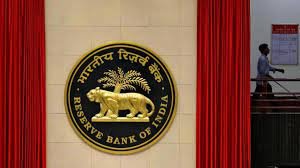Introduction
Micro, Small, and Medium Enterprises (MSMEs) are pivotal to India’s economic landscape, contributing significantly to employment, industrial output, and exports. Recognizing their importance, the Government of India has implemented various initiatives to improve credit access and financial support for MSMEs, aiming to bolster their growth and sustainability.
Establishment of SIDBI: A Dedicated Financial Institution
The Small Industries Development Bank of India (SIDBI), established on April 2, 1990, serves as the apex financial institution for the promotion, financing, and development of the MSME sector. SIDBI provides direct and indirect financial assistance to meet the diverse needs of MSMEs, including term loans, working capital, and microfinance. Additionally, SIDBI offers refinancing facilities to banks and financial institutions, ensuring a steady flow of credit to the sector.
Role of NSIC in Facilitating MSME Growth
The National Small Industries Corporation (NSIC), a Government of India enterprise under the Ministry of MSME, was established in 1955 to promote and support small enterprises. NSIC facilitates MSMEs by providing machinery on a hire-purchase basis, assisting in marketing their products, supplying raw materials, and offering training and incubation services. These efforts aim to enhance the competitiveness and market reach of MSMEs.
Introduction of the Unified Lending Interface (ULI)
In a significant move to streamline credit access, the Reserve Bank of India (RBI) announced the launch of the Unified Lending Interface (ULI) platform. This digital platform is designed to expedite credit appraisal processes and facilitate a consent-based digital flow of information, thereby addressing the unmet credit demand in sectors such as agriculture and small businesses. The ULI is expected to transform the lending landscape, similar to the impact of the Unified Payments Interface (UPI) on digital payments.
Budgetary Measures to Support MSMEs
The Indian government’s budget for 2025-26 includes several measures aimed at enhancing the financial ecosystem for MSMEs. These measures focus on boosting inclusive development and attracting private investment to foster growth. Key initiatives include substantial increases in foreign direct investment (FDI) in the insurance sector, incentives for manufacturing through the establishment of a National Manufacturing Mission, and the enhancement of infrastructure development with significant loans to states. Additionally, the budget proposes setting up funds for start-ups and urban challenges, which can provide MSMEs with access to capital and support innovation
Collaborative Efforts to Enhance Financial Inclusion
Efforts to improve financial inclusion among women entrepreneurs are also noteworthy. Initiatives led by organizations like Women’s World Banking aim to provide unbanked women with financial services, addressing the significant underfunding of women entrepreneurs in developing economies. These efforts include government-backed loan guarantees, adjustments to collateral requirements, and targeted product designs that cater to women’s specific needs, thereby enhancing their access to credit and financial services.

Why This News is Important
Empowering MSMEs for Economic Growth
The government’s initiatives to enhance credit access and finance for MSMEs are crucial for empowering these enterprises, which are the backbone of the Indian economy. Improved access to credit enables MSMEs to expand operations, innovate, and contribute more significantly to GDP growth.
Promoting Financial Inclusion
By introducing digital platforms like the ULI and supporting organizations focused on women’s financial inclusion, the government is promoting a more inclusive financial system. This ensures that underserved populations, including rural entrepreneurs and women, have access to necessary financial services.
Stimulating Employment Opportunities
Enhanced support for MSMEs leads to business expansion, which in turn creates employment opportunities across various sectors. This is particularly vital for absorbing the growing workforce and reducing unemployment rates.
Historical Context
Evolution of MSME Support in India
The Indian government has a longstanding history of supporting small industries, with the establishment of NSIC in 1955 and SIDBI in 1990. These institutions have evolved to address the changing needs of the MSME sector, adapting their services to provide more targeted financial and developmental assistance.
Digital Transformation in Financial Services
The launch of digital platforms like UPI revolutionized payments in India, setting the stage for similar transformations in lending through platforms like the ULI. These digital initiatives reflect the government’s commitment to leveraging technology for financial inclusion and efficiency.
Key Takeaways from Government Initiatives to Enhance MSME Financing
| S.No | Key Takeaway |
|---|---|
| 1 | Establishment of SIDBI to provide dedicated financial support to MSMEs. |
| 2 | Role of NSIC in facilitating growth through marketing, raw material supply, and training services. |
| 3 | Introduction of the Unified Lending Interface (ULI) to streamline digital lending processes. |
| 4 | Budgetary measures focusing on inclusive development and increased investment in the MSME sector. |
| 5 | Collaborative efforts to enhance financial inclusion, particularly for women entrepreneurs. |
FAQs: Frequently Asked Questions
1. What is the role of SIDBI in MSME financing?
SIDBI (Small Industries Development Bank of India) provides financial assistance, refinancing options, and developmental support to MSMEs to enhance their growth and sustainability.
2. What is the Unified Lending Interface (ULI)?
The Unified Lending Interface (ULI) is a digital platform introduced by the RBI to streamline the credit appraisal process and facilitate easy access to loans for small businesses and the agriculture sector.
3. How does NSIC support MSMEs?
The National Small Industries Corporation (NSIC) helps MSMEs by providing raw materials, marketing support, machinery financing, training, and incubation services to boost their competitiveness.
4. What are the key budgetary measures for MSMEs in 2025-26?
The budget includes increased foreign direct investment (FDI) in the insurance sector, the establishment of a National Manufacturing Mission, and financial incentives to attract private investment in MSMEs.
5. How is the government promoting financial inclusion for women entrepreneurs?
Initiatives such as loan guarantees, relaxed collateral requirements, and specialized financial products for women entrepreneurs aim to enhance their access to credit and business opportunities.
Some Important Current Affairs Links


















